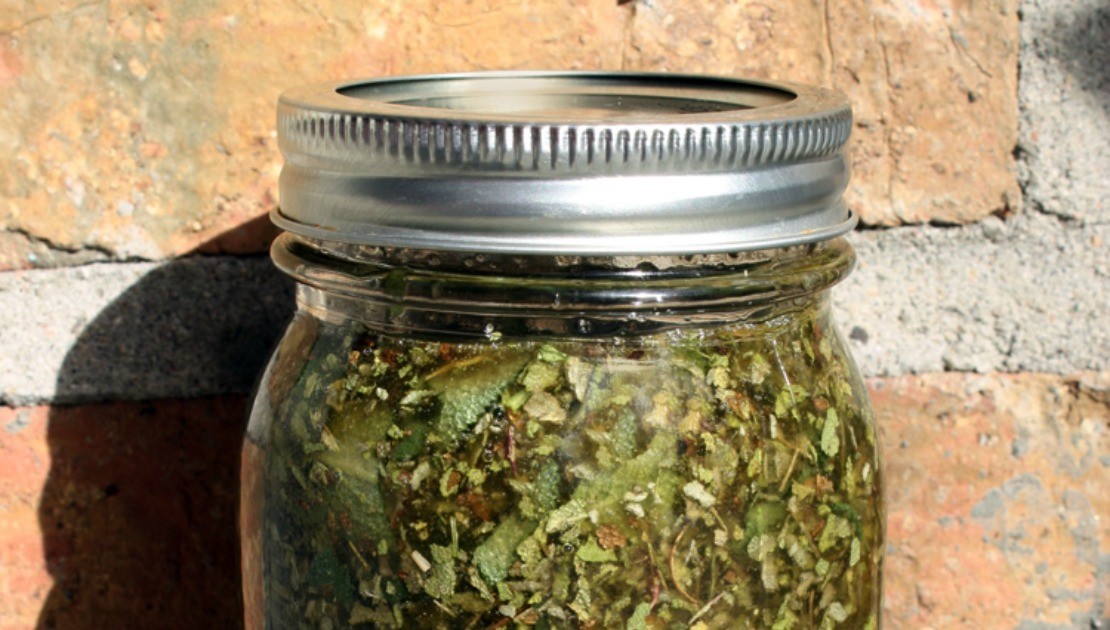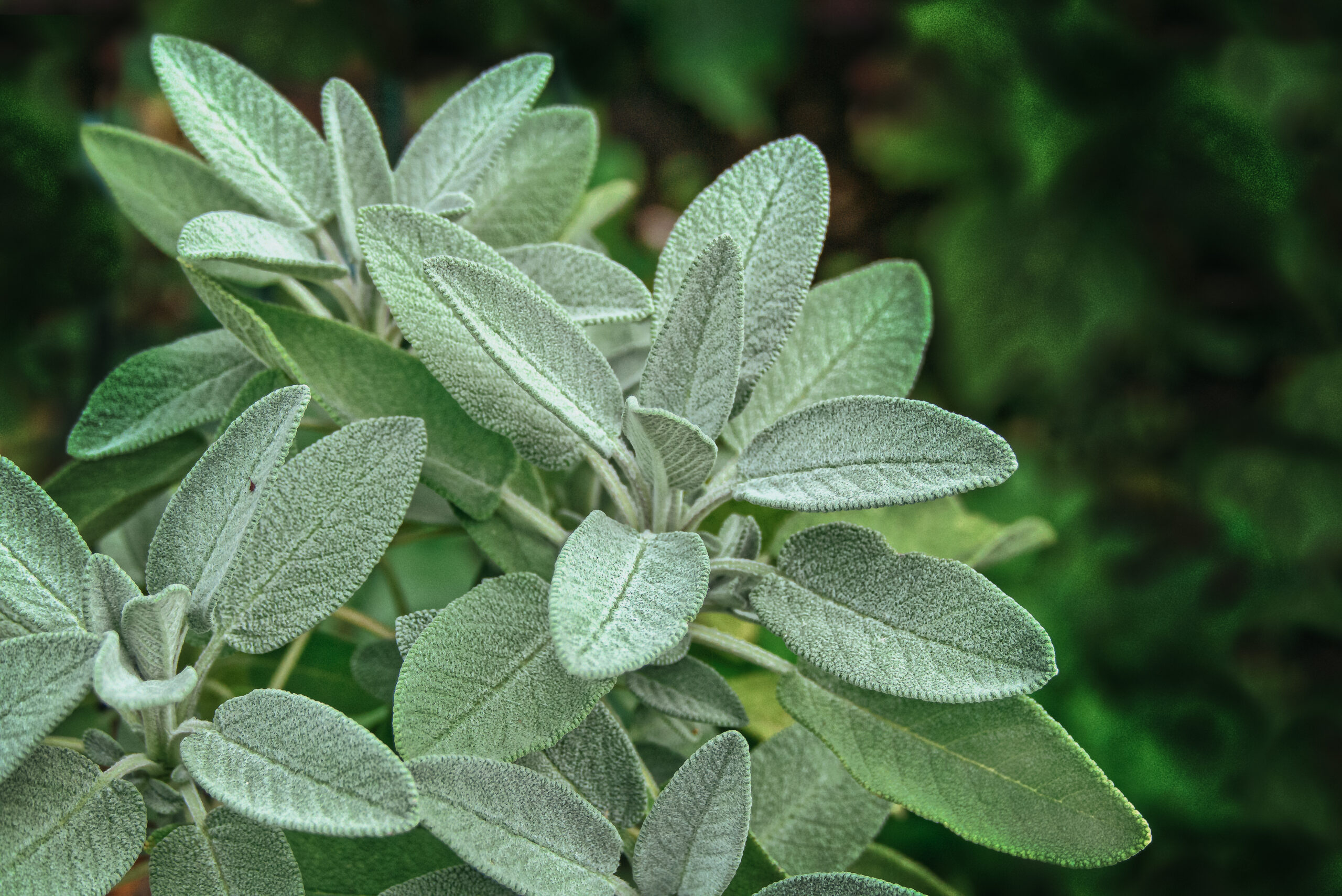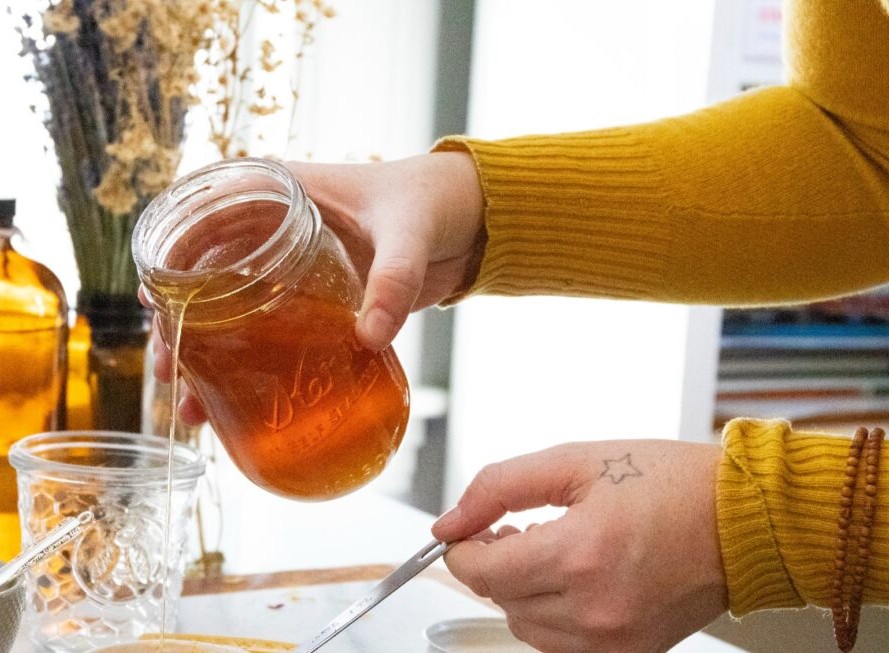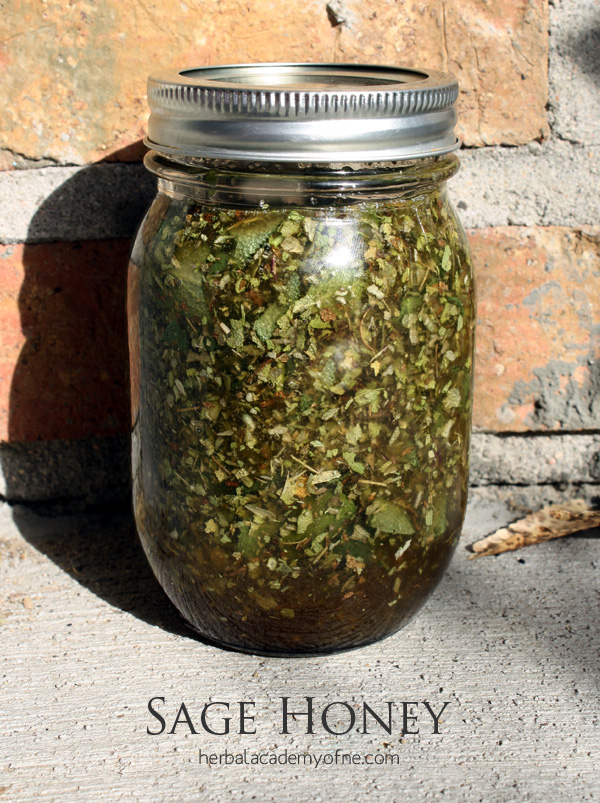
Making Sage Honey
Sage. One of my favorite culinary herbs and one of the herbs people have easy access to no matter where they are. Salvia officinalis – even the Latin name gives us an idea of the respect this Mediterranean beauty has earned. Salvia in Latin derives from the word salvere which means, “to save.” Historically, it has been used in many ways from a facial toner to a plague remedy, as well as drying up breast milk and easing a cough. Sage is a well-loved and well-used herb throughout the ages.

Sage
Perhaps, if we take a closer look at the herb we can get a better idea of how sage works in the body.
Latin name: Salvia officinalis
Common names: Common sage, garden sage, golden sage, kitchen sage, and true sage. Cultivated varieties include purple and red sage.
Family: Laminacea
Parts used: Whole herb
Description: This frequently cultivated herb is originally from the Mediterranean region. It has since naturalized around the world. There are other useful Salvia species native to most bioregions. It is a perennial that, when regularly harvested, can grow approximately two feet tall and wide. The leaf and flower color can vary widely depending on the cultivation, but common sage is a silvery green on top and almost white on the bottom with soft ovalate leaves and flowers in whorls ranging from purple to a light delicate, almost white, pink. The stems have the common Laminacea trait of being square. It thrives well in dryer climates and is a perfect addition to a permaculture like garden that can be planted once and left to thrive through the years. When planted in vegetable gardens it can help repel certain insects.
Actions: Antibacterial, antifungal, antiseptic, antispasmodic, anticattarrhal, anhidrotic, astringent, diaphoretic (when served warm), expectorant, emmenagogue, febrifuge, nervine, astringent, alterative, diuretic, carminative, stimulant
Energetics: Sage is an interesting plant that affects people differently. It can be warming or cooling, depending on the person. See if you can find fresh sage leaves and pop one in your mouth, chew and see if it is warming or cooling in your mouth. I find, if I prepare sage in a warm tea or warm up the tincture it is more warming and if I take it in a cool tea or tincture it is more cooling. Fresh sage is cool to me as well. How does it work in your body? Try it and see for yourself. It is drying in nature.
Contraindications: Because sage is drying it should be avoided if you are nursing, unless you specifically need to reduce breast milk production. It generally isn’t a good ally for people who are dry. Because of the thujone content (one of the volatile oils sage contains) it should not be used medicinally for people who are prone to seizures. I don’t suggest taking it in a medicinal dose while pregnant for any length of time.

Sage Honey Recipe
Now that you can see how sage is commonly used, let me introduce you to one of my favorite remedies for scratchy throat caused by sinus discharge and excessive coughing – Sage honey.
A tablespoon of this delicious infused honey works like magic on scratchy raw throats. In warm tea it helps to stimulate sweating and salivation, and thins mucous allowing it to exit the body. When added to a cold infusion it can dry most body secretions including sweat, saliva, and mucous production in the mouth, throat, and lungs and lactation. If taken mixed in a luke warm tea its antibiotic and astringent natures help with sore scratchy throats (Wood, 2008).
Sage Honey
Glass Mason Jar – recently sanitized
Enough fresh sage to fill ½ the jar or enough dry sage to fill ¼ of the jar (I prefer to use fresh sage but both are delicious and effective)
Enough local, raw honey to fill the jar to the brim
- Sanitize your jar by dunking it in boiling water or running it through the sanitize cycle in the dishwasher. Allow to dry.
- Chop your fresh sage up as fine as you can and add it to the jar until it fills up about half way. If you are using dry cut and sifted sage, add enough sage to fill the jar up ¼ of the way.
- Fill the jar to the top with local raw honey and allow the air bubbles to release them selves. Add more honey to top off the jar leaving about ¼ – ½ inch at the top.
- Cover the jar with a lid and allow to sit in a cool, dark, dry place for 2-4 weeks.
- Use as needed.
Some other herbs that might be nice to add which you could use in addition to sage while following the measurement guidelines in the recipe above:
Ginger is warming to the body, analgesic, antimicrobial and tastes amazing. The combination of ginger and sage is an unlikely one but sure to please the palate and quite effective.
Cinnamon is another sweet, warming, analgesic, antimicrobial herb that is a common remedy for viruses and tasty to boot! (Cinnamon is more than just a holiday spice!)
Rosemary is a wonderful aromatic that combines well with sage. The two together in a hot cup of water smell divine and invigorate both the mind and the body.
Marshmallow root powder, calendula, violet leaves and other demulcent herbs can help balance and, depending on the quantity in the formula, counteract the drying effect of sage and help the body retain much needed moisture.

Amanda Klenner is the owner of Natural Herbal Living Magazine and Herb Box and the blog Natural Living Mamma. She is the mother of two toddlers who she enjoys watching grow every day, and is also a also a wife, herbalist, and author. Plant based living is her passion. We are all connected and all rely on each other to survive. Amanda honors the weeds and want to help others learn a passion for the them, for the herbs, and for the life on this planet. She believes that by working with nature not only do we nourish our bodies and our minds, we nourish our spirits.
REFERENCES
Frawley D and Lad V. (2001). The Yoga of Herbs. Twin Lakes, WI: Lotus Press
Salvere. Retreived October 2014 from http://en.wiktionary.org/wiki/salvare
Wood, Matthew. (2008). The Earthwise Herbal: A Complete Guide to Old World Medicinal Plants. Berkeley, CA: North Atlantic Books







